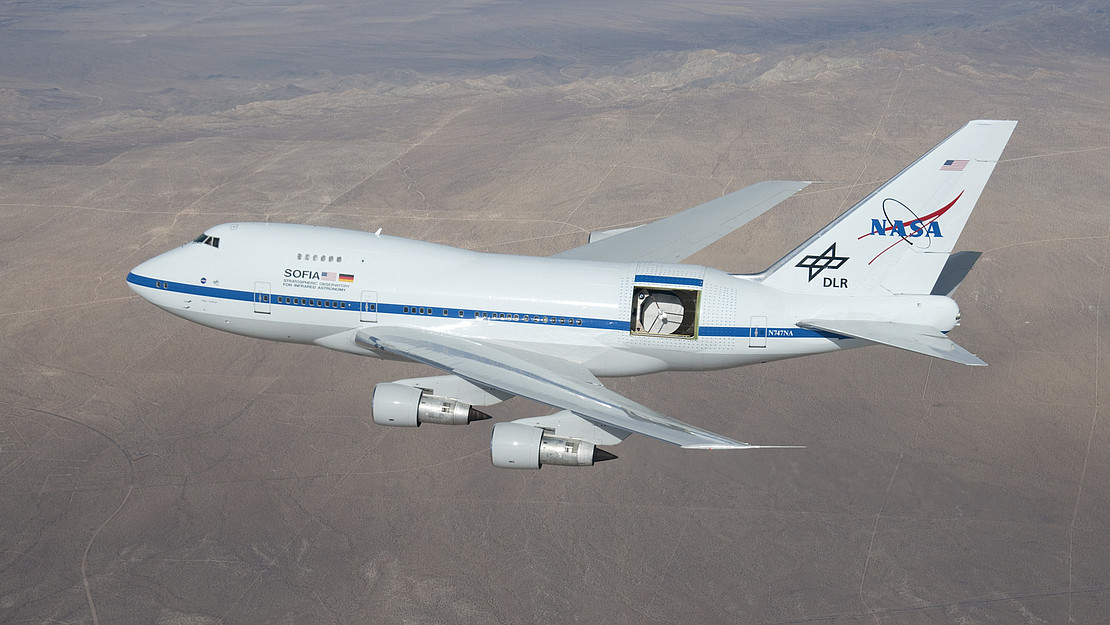This page contains automatically translated content.
Kassel astrophysicists observe molecule breeding site from stratosphere
 Image: NASA/Carla Thomas.
Image: NASA/Carla Thomas.The Stratospheric Observatory for Infrared Astronomy, or SOFIA, is a converted Boeing 747SP with a 2.7-meter telescope in its tail. With this flying infrared observatory, scientists can study the universe far above the clouds, at an altitude of more than ten kilometers. Up there, infrared light - in contrast to the Earth's surface - is easy to receive. Now, a group from Kassel led by Dr. Guido W. Fuchs and Prof. Dr. Thomas Giesen has been awarded exclusive use of SOFIA for more than two hours to observe molecular and dust envelopes around aging stars.
"We are interested in molecules near giant old stars, which give us valuable information about the chemical composition of our universe. Observing with SOFIA is a great opportunity for us to study these molecules in the infrared. We would not be able to observe them like this with normal telescopes," says project leader Fuchs, who will be on board for the measurement himself. Aging stars are considered the driving force to change the chemistry in our universe by producing elements such as carbon, nitrogen or oxygen from hydrogen through nuclear processes. These contribute significantly to complex cosmic chemistry and form the basis for all life.
In order to be able to carry out observations at SOFIA, the Kassel astronomers first prevailed over strong international competition in a scientific bidding process: Their project is among the four top-classified German submissions and has thus secured a guaranteed measurement time of 132 minutes on SOFIA. The launch is expected in the second half of 2020, when the star to be observed, "VY Canis Majoris" in the constellation of the Great Dog, will occupy a favorable position in the sky.
SOFIA is a facility managed by the U.S. space agency NASA and DLR. For the Kassel project, the observation flight will depart from Palmdale Airport near Los Angeles, California.
With its laboratory astrophysics group, the University of Kassel has world-renowned expertise in astronomically relevant molecules and specializes in high-resolution spectroscopy. This specialist discipline in particular is crucial for detecting molecules over long astronomical distances.
Further information:
Astrophysics Group Kassel:
http://www.uni-kassel.de/fb10/institute/physik/forschungsgruppen/laborastrophysik/startseite.html
SOFIA: www.dlr.de/sofia
Contact:
Dr. Guido W. Fuchs
University of Kassel
Laboratory Astrophysics Research Group
Tel: 0561 804-4797
E-Mal: fuchs[at]physik.uni-kassel[dot]de